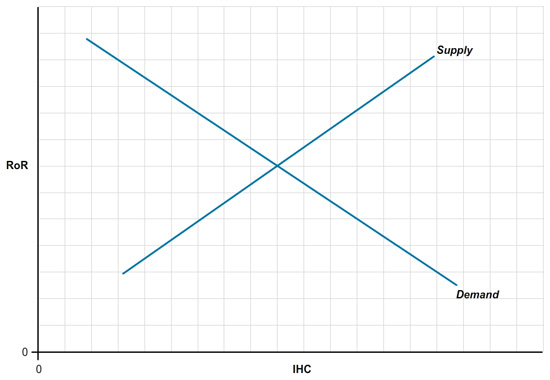Solved Problems
Chapter 12
TABLE OF CONTENTS
Question 1 of 4
Step 1
Solved Problems
true
true
You must read each slide, and complete any questions on the slide, in sequence.
Consider the following graph, which depicts the supply of and demand for human capital. The x-axis shows the level of investment in human capital (IHC) and the y-axis shows the rate of return (RoR) on human capital.

Suppose the U.S. Congress approves increased funding for community colleges. In this case, the of human capital will .
3
More graduates should mean more human capital supplied.
Step 2
As a result, the level of investment in human capital will .
3
If supply shifts right, all else equal, equilibrium quantity (Q) increases.
Step 3
Now suppose that U.S. manufacturing becomes more heavily dependent on computers, which will require trained workers to operate computers. In this case, the for human capital will .
3
Here, firms will need to hire more skilled labor to complement their machines. Demand should increase.
Step 4
As a result, the level of investment in human capital will .
3
If demand shifts right, all else equal, equilibrium Q increases.